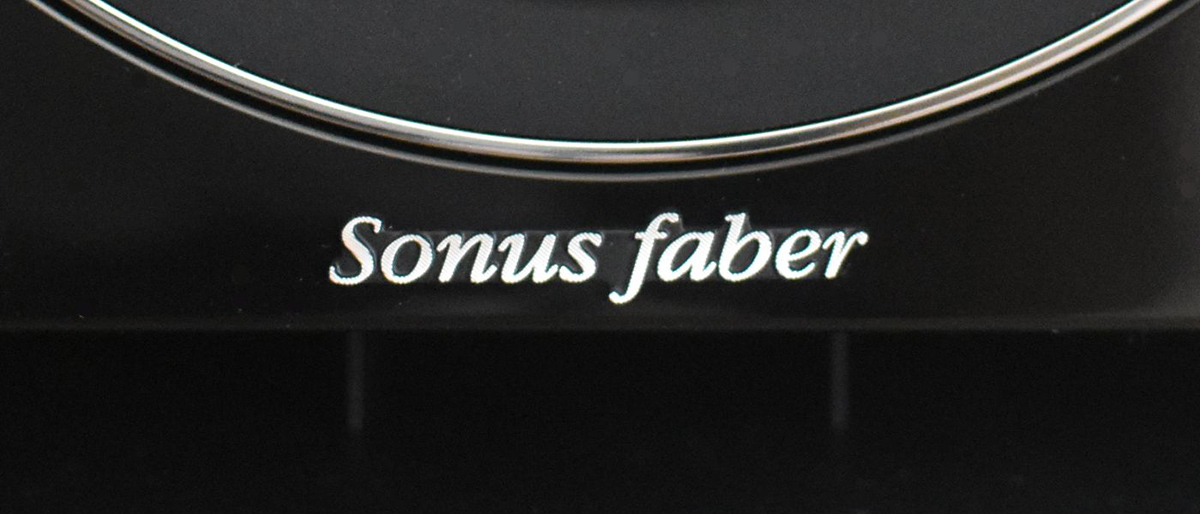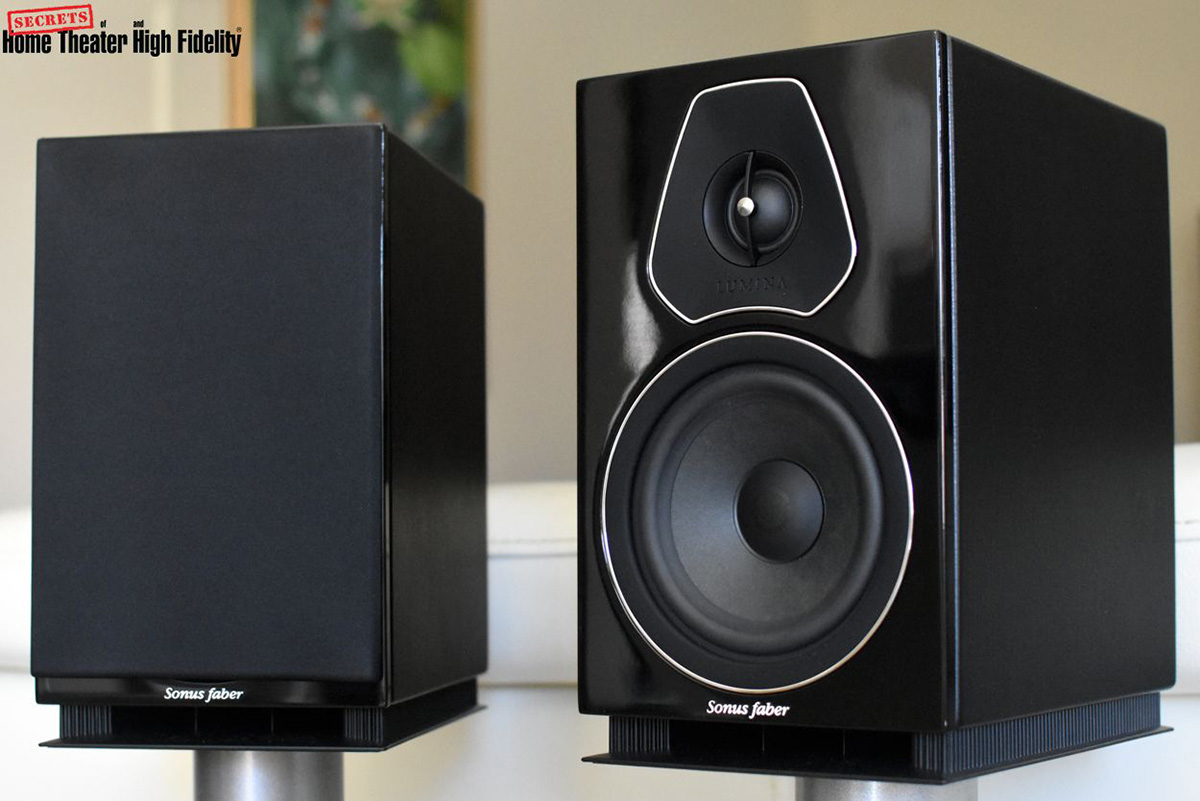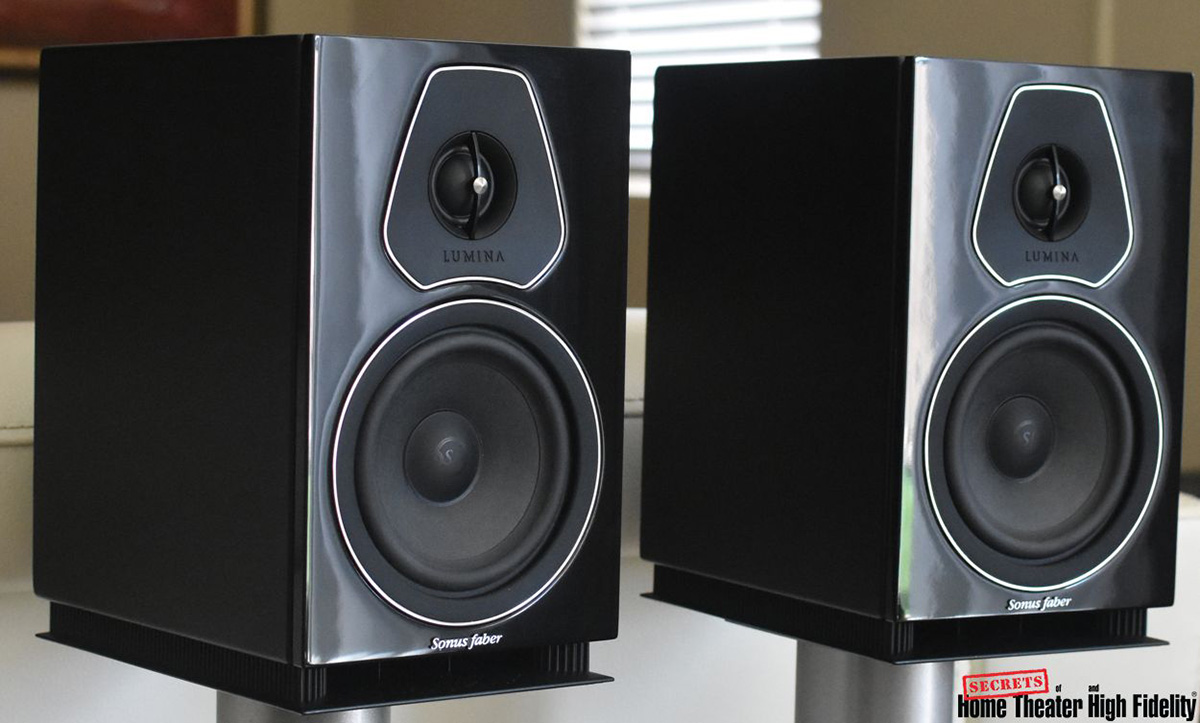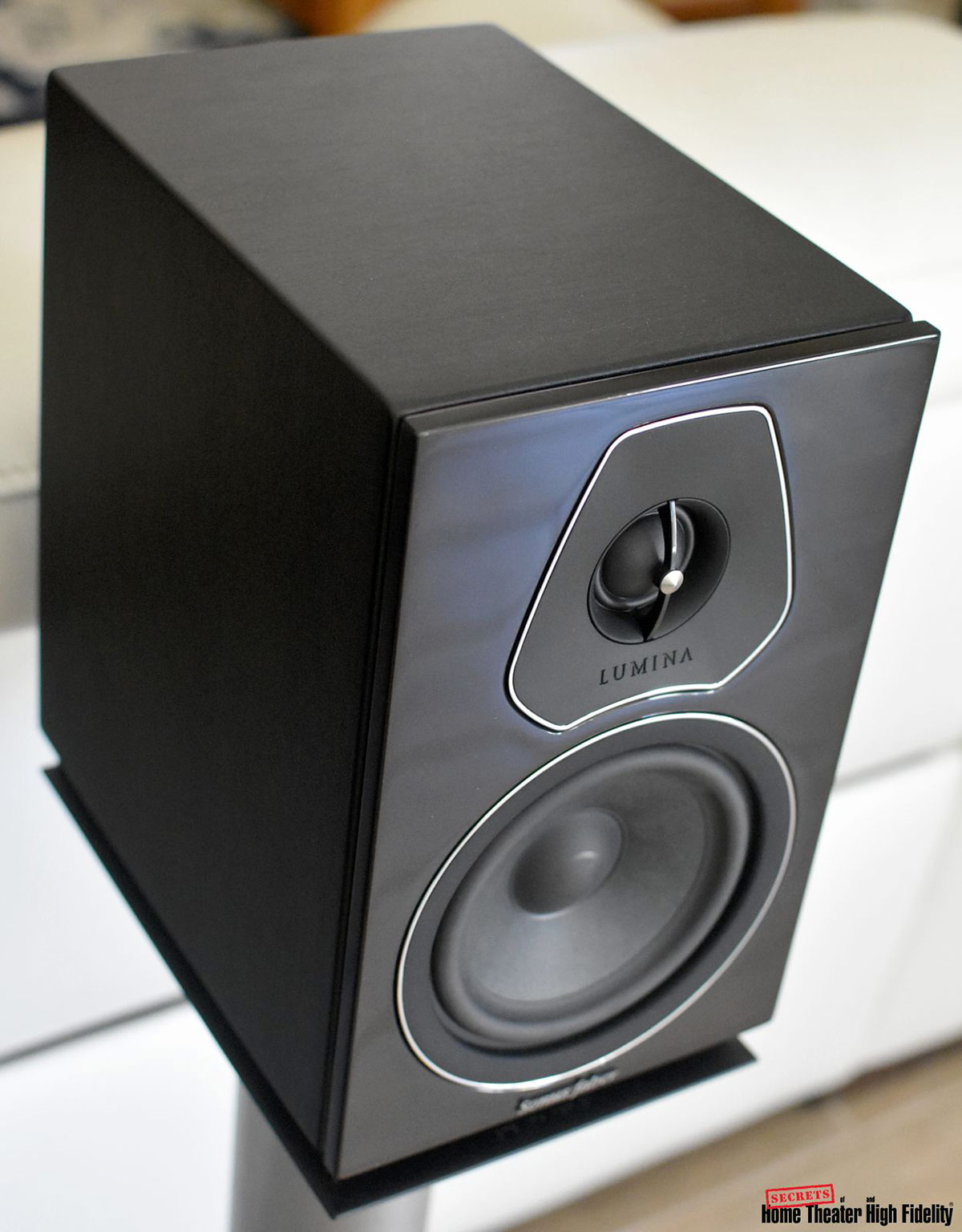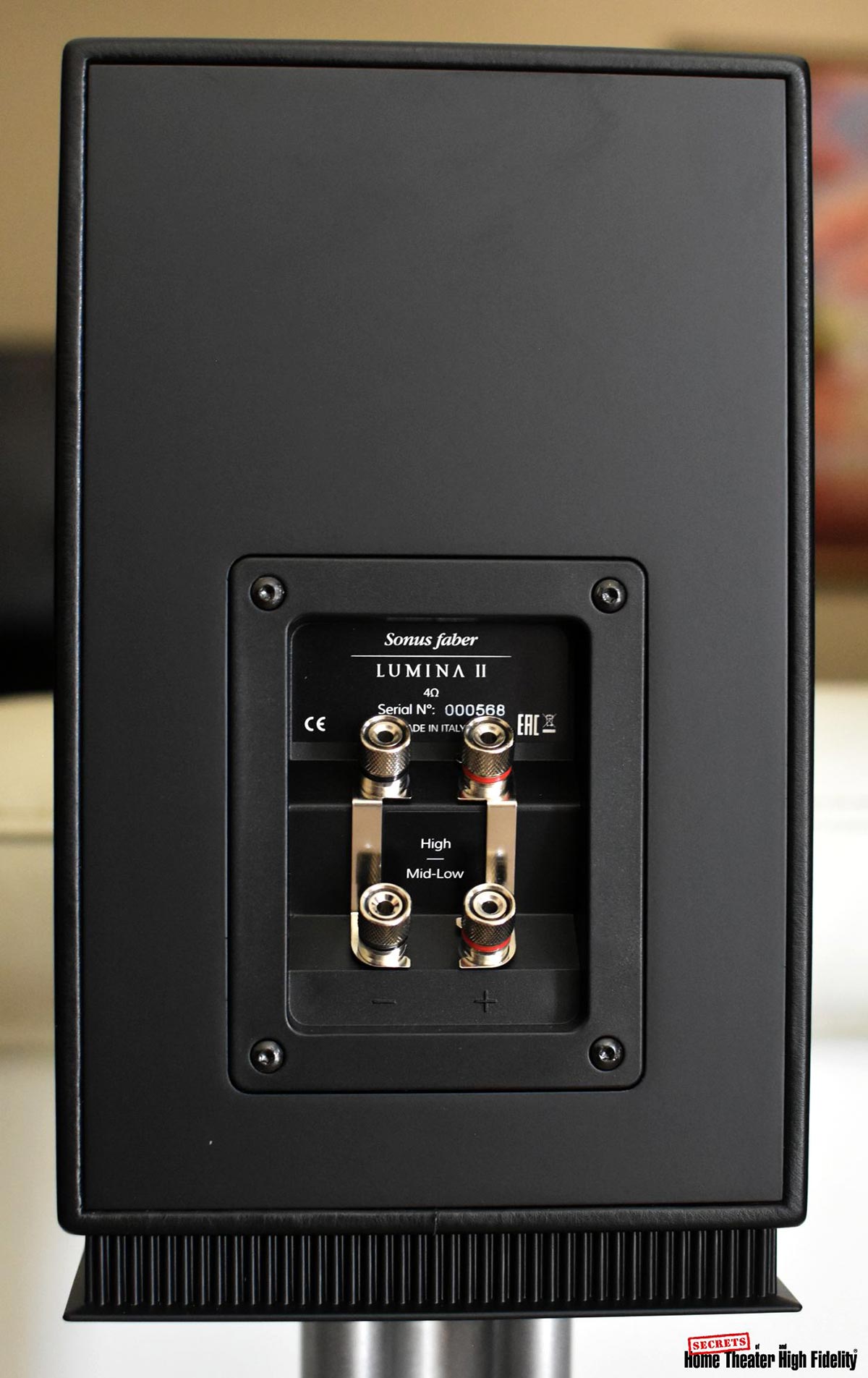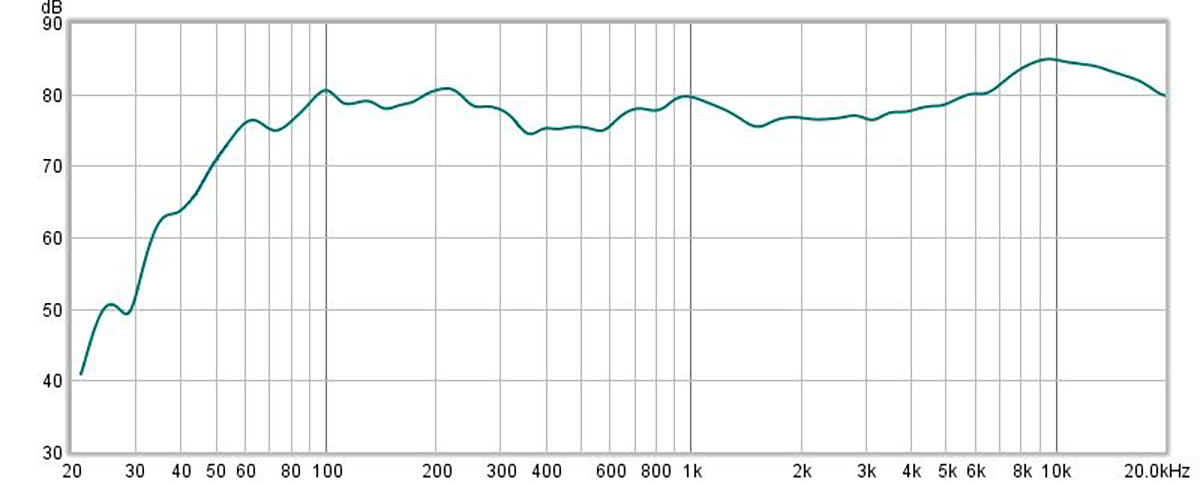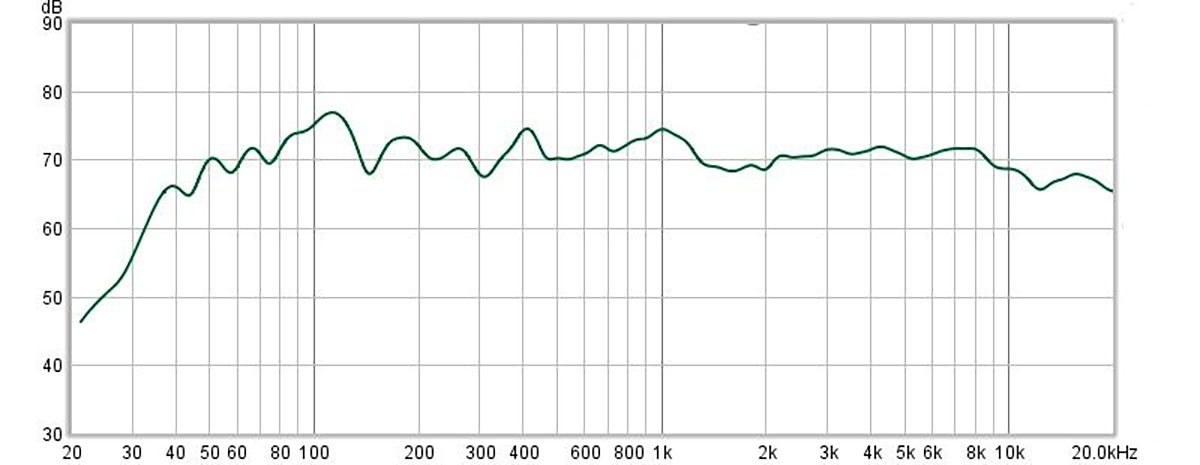Sonus faber Lumina II Speakers
- Visually beautiful little speakers
- Inconspicuous front slot-port design
- Competent performer
The Lumina collection serves as the entry-level to the Sonus faber’s ever-expanding product lineups. Secrets has reviewed some products from this collection before, the Lumina III and the Lumina V, both of which are floor-standing speakers. This review will look into the Lumina II (MSRP of $1,199/pair), which is one of two bookshelf speaker models in the collection.
Simplicity is the central theme of Sonus faber’s Lumina collection, which aims to deliver a high-quality music experience to a wider audience. Unlike its higher-level collections, Sonus faber adopts a simpler and more squarish cabinet design for the speakers in the Lumina collection. Even though this collection is offered at a more accessible price point, it still represents a Sonus faber creation through and through. It carries proudly the unmistakable DNA of a Sonus faber speaker, from the use of its iconic materials, such as faux leather and real multilayer wood on the cabinet, to the use of speaker drivers with natural composition.
The Lumina II reviewed here is the larger of the two bookshelf speaker models in the Lumina collection (the other is the Lumina I). Size-wise, it is still relatively on the small side of the bookshelf speaker spectrum on the market. Sonus faber always imparts an artistic look into its products, and there is no exception here as well. The speakers look stylish even in their simpler, squarish cabinet design. The review will dwell further on the features and performance of these little $1,199 Italian beauties.
Design:
2-way vented box shelf speaker
Nominal Impedance:
4 Ohms
Frequency Response:
55 – 24,000 Hz
Sensitivity:
86 dB SPL (2.83 V/1m)
Recommended Amplifier:
30W – 150W, without clipping
Tweeter:
1.14 in (29 mm) high-definition DAD™ driver, visco-elastically baffle decoupling
Midwoofer:
5.9 in (150 mm) cone diaphragm made from cellulose pulp and other natural fibers
Crossover Frequency:
1,800 Hz
Weight (Each):
12.5 lbs. (5.65 kg)
Dimensions (W x H x D):
7.21 x 12 x 10.3 in (180 x 304 x 263 mm)
Finishes:
Walnut wood, wenge wood, glossy piano black
MSRP:
$1,199/pair
Website:
Company:
SECRETS Tags:
Sonus faber, lumina II, bookshelf speakers, speakers, two-way bass reflex design, Speaker Review 2022
The Lumina II employs a two-way bass-reflex design utilizing a 1.1” dome tweeter and a 6” mid-woofer with a crossover frequency of 1.8 kHz. The 1.1” Damped Apex Dome (DAD™) tweeter, which features a hand-coated soft-silk diaphragm, is the same as the one used in the higher-end Sonetto. The 6” midwoofer, which features a custom-made basket and cellulose-pulp blended diaphragm, is specifically developed for this collection. The chrome lining around the drivers is a nice design touch, accentuating the shape of the drivers and giving a stylish appearance to the speaker’s front panel. The rectangular-shape slot vent is inconspicuously placed horizontally on the bottom front of the speaker and the whole vent structure functions as the base of the speaker.
Typical to Sonus faber speakers, the Lumina II exhibits an attractive appearance and good build quality. The sides and top of the cabinets are wrapped in black faux leather, a material that has been used in most of the Sonus faber speakers. The front baffle has several finish options: piano black glossy finish and real wood Walnut or Wenge veneer. All these finish options carry the same MSRP of $1,199. As can be seen from the pictures, the review sample is a gorgeous piano gloss black finish. A protective fabric grille that attaches magnetically to the front baffle is provided for each speaker. Most of my critical listening during the review was done with the grilles off as they reduced ever so slightly the sonic transparency of the speakers. Moreover, the speakers looked more attractive without grilles.
Each Lumina II speaker is equipped with two pairs of nickel-plated binding posts, which accommodate bi-wiring/bi-amping. Out of the box, these two pairs of binding posts are connected with a pair of metal jumpers, which are also nickel-plated. At the time of this writing, there were no available Sonus faber matching stands for the speakers. For the review, I used a pair of 27” metal stands, which put the speakers at a proper height for my listening setup.
I used the Michi X3 integrated amplifier in single-wiring configuration to power the Lumina II speakers during most of the review. These speakers are not hard to drive by any means and the Michi X3, with the capability of supplying 350 W/channel to 4-ohm loads (the nominal impedance of the Lumina II is 4-ohm), proved to be more than enough to make the Lumina II sing. The PS Audio PerfectWave Transport and the AURALiC Aries G1 streamer, feeding the PS Audio DirectStream DAC were used as the front end for the evaluation. In the latter part of the process, I also summoned my Rythmik F12SE subwoofer to augment the Lumina II’s lower-bass response.
The left and right Lumina II speakers were positioned about 8 ft apart for the review. With the front port design, the placement of the speakers with respect to the wall behind them was not that sensitive. Nevertheless, I pulled them sufficiently away from my front wall to give some breathing room to achieve good imaging. In their final position for the evaluation, the front baffles of the speakers sat 4 ft away from the front wall and about 9.5 ft away from my listening position. A slight toe-in was applied to the speakers to get the best image and soundstage for stereo playback.
Prior to the listening evaluation, I did a quick frequency-response measurement using REW software and a calibration microphone just to get an idea of the technical performance of the speakers. The first figure below shows the in-room on-axis nearfield (microphone 1 foot from speaker) frequency-response of the Lumina II speakers. Overall, this measurement suggests that the speaker produced relatively flat midrange and bass responses with slightly elevated upper treble. I think this elevated nearfield treble response is by design to compensate for the high-frequency energy loss of the soundwaves traveling to the listener’s ears at normal listening distances in typical room absorptions. As can be seen from the responses measured at the listening position (second figure below, microphone 9.5 feet from speaker), there was no treble emphasis there. The nearfield measured response also shows a bass extension to 55 Hz, which is as stated in the specifications. In my room, useful bass extension down to about 45 Hz was observed at the listening position. The midrange response stayed remarkably flat when measured nearfield or at the listening position. This corresponds to my listening impression of a solid midrange performance, which I will touch on more subsequently.
I started my evaluation by listening to the Lumina II speakers in stereo without the use of a subwoofer. I was immediately impressed by the liveliness of the Lumina II’s sonic presentation. Although the neutrality of the musical presentation was there, these speakers were not exactly the most neutral speakers I had ever listened to. But somehow, the musical presentation of the speakers brought a sense of excitement. It might be due to a bit of sparkle in the treble, which added some liveliness and details to the music, or perhaps the excellent clarity of the midrange, which accentuated the musical texture and rhythm. Whatever it was, the music never sounded bland through these speakers. Although the midrange stood out as their strong point with its clarity and natural quality, the speakers exhibited relatively balanced performance across the audible frequency spectrum. I found that their bass response was respectable. Being relatively small, the lack of deep bass extension was expected. But impressively, the upper- and mid-bass they produced had sufficient impact and great articulation.

Youn Sun Nah “Same Girl”
The Lumina II speakers’ prowess to effortlessly disappear in presenting the musical soundstage was commendable. The playback of Song of No Regrets from Youn Sun Nah’s Same Girl (2010) album through the speakers exemplified this very point. The singer’s voice and the sound of each acoustic instrument in the track seemed to emanate from their specific location in the believably portrayed intimate musical soundstage. The Lumina II also reproduced Youn Sun Nah’s vocal with such clarity capturing every breath during her singing.

Radiohead “Pablo Honey”
The Lumina II might be small but there was nothing small in their musical presentation. This applied not only to the presentation of the soundstage dimension but also on the conveyance of the textural energy in the music. These speakers seemed to have a knack for conveying the energy in the music the way it should be presented. The Lumina II rightfully portrayed the spaciousness of the musical stage of the track Creep by the British rock band Radiohead from the album Pablo Honey (2016). They also believably captured the texture of the drum and electric guitar that are featured heavily in the music. The full blast of energy due to the complex interweaved kick drum, cymbals, and electric guitar sound in the track was nicely conveyed by the speakers.
Although the bass produced by the Lumina II speakers was sufficient for most of my music listening, it could be improved with the addition of a good subwoofer. In the later part of my review, I used my Rythmik F12SE subwoofer, which is capable to extend the bass to well below 20 Hz, to augment the Lumina II pair and achieved an excellent result. In the setup, I let the Lumina II run full range and crossed over the Rythmik subwoofer at around 55 Hz. The combination turned out to be a potent one, improving the bass presence and adding more weight to the foundation of the overall musical presentation. Combining these bookshelf speakers with a good subwoofer in a 2.1 configuration like this made the whole musical reproduction more complete and would be my method of choice to gain the best sonic advantage of the Lumina II based speaker setup.
The Sonus faber Lumina II speakers are little Italian beauties that are reasonably priced and sound as good as they look.
- Stylish appearance in well-built, squarish cabinet design
- Inconspicuous front slot-port design
- Use of quality drivers and components
- Magnetically attached grille
- Effortless imaging capability with exciting lively sonic characteristics
The Lumina II is a little speaker that could. The speakers may belong to Sonus faber’s entry-level Lumina collection, but there is no entry-level at all in their exhibited performance. Overall, these bookshelf speakers have a lot going for them, from their attractive design and material selection to their strong sonic performance. Moreover, their MSRP of $1,199/pair is very reasonable for the value they bring to the table. If you are looking for high-performing, small bookshelf speakers, I highly recommend giving the Lumina II speakers a listen. I would not be surprised if their sharp appearance as well as their solid sonic performance win you over.



